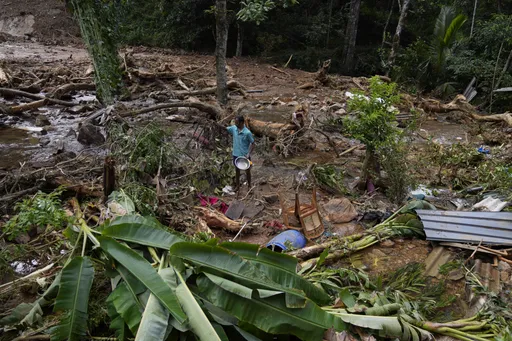A recent heatwave in Siberia that saw temperature records tumble as the region sweltered in 38-Celsius highs was "almost impossible" without the influence of manmade climate change, leading climate scientists have said.
International scientists released the study on Wednesday that found the greenhouse effect multiplied the chance of the region's prolonged heat by at least 600 times, and maybe tens of thousands of times.
In the study, which has not yet gone through peer review, the team looked at Siberia from January to June, including a day that one town, Verkhoyansk, recorded a temperature of 38C, smashing previous records.
Earth's poles are warming faster than the rest of the planet, and temperatures in Siberia, home to much of the world's carbon-rich permafrost, were more than 5C hotter than average between January and June, the study said.
Read more: Greenland ice sheet shrinks by record amount - climate study
International team
Scientists from the United Kingdom, Russia, France, Netherlands, Germany, and Switzerland used 70 climate models running thousands of complex simulations comparing current conditions to a world without man-made warming from the burning of coal, oil, and gas.
They found that without climate change the type of prolonged heat that hit Siberia would happen once in 80,000 years, "effectively impossible without human influence," said study lead author Andrew Ciavarella, a scientist at the UK Met Office.
The study, coordinated by World Weather Attribution, was done in two weeks and hasn’t yet been put through the microscope of peer review and published in a major scientific journal.
But the researchers who specialise in these real-time studies to search for fingerprints of climate change in extreme events usually do get their work later published in a peer-reviewed journal and use methods that outside scientists say are standard and proven.
World Weather Attribution's past work has found some weather extremes were not triggered by climate change.
Read more:Earth had its hottest decade on record in 2010s – scientists
But 2020's Siberian heat wave stood out among the many studied, said attribution team co-lead Friederike Otto, acting director of Oxford University’s Environmental Change Institute.
"Definitely from everything we have done it's the strongest signal that we have seen," Otto said.
Read more: UN warns of even warmer temperatures over next 5 years
Various external factors
The team behind the calculations stressed that the Siberian heat wave was a problem for the entire globe.
Some 1.15 million hectares of forest going up in flames released millions of tonnes of CO2 into the atmosphere. At the same time, the wildfires and sustained heatwaves accelerated the region's permafrost melt.
This caused an oil tank built on frozen soil to collapse in May, leading to one of the region's worst-ever oil spills.
"Such a prolonged heat wave is important, not only for its influence on people but also from a scientific point of view," said Olga Zolina, from Russia's PP Shirshov Institute of Oceanography.
"The arctic is very, very important generally for forming of weather and circulation. So such high temperatures are really important for the whole globe."
'No chance of happening'
The 2015 Paris climate deal commits nations to cap temperature rises to "well below" 2C (3.6 degrees Fahrenheit) above pre-industrial levels and to strive for a 1.5C limit if at all possible.
With just 1C of warming so far, Earth is already buffeted by record-breaking droughts, wildfires and superstorms made more potent by rising sea levels.
To keep in line with the 1.5C target, the United Nations says global emissions must fall by 7.6 percent every year this decade.
Sonia Seneviratne, from ETH Zurich's Department of Environmental Systems Science, said the research showed the heatwave was an example of "extreme events which would have almost no chance of happening" without man-made emissions.
Read more: UN's COP26 climate summit postponed due to coronavirus
























